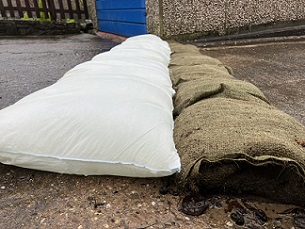 FloodSax alternative sandbags are a cheaper and far better option than pre-filled sandbags that can quickly rot
FloodSax alternative sandbags are a cheaper and far better option than pre-filled sandbags that can quickly rot
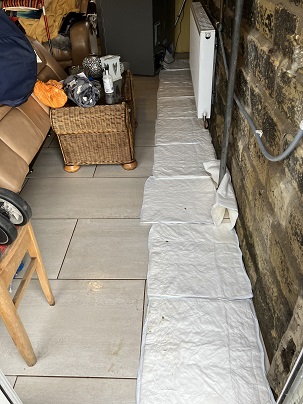 These FloodSax saved thousands of pounds damage during an internal leak, stopping water from wrecking the floor, woodwork and electrics
These FloodSax saved thousands of pounds damage during an internal leak, stopping water from wrecking the floor, woodwork and electrics
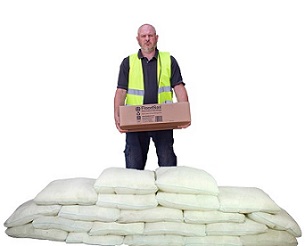 All these 20 FloodSax alternative sandbags came from this one easy-to-carry box
All these 20 FloodSax alternative sandbags came from this one easy-to-carry box
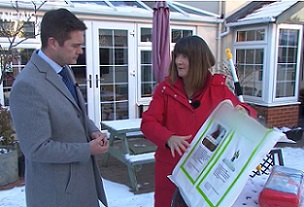 Flood expert Mary Dhonau being interviewed on national TV about why FloodSax are so much better than old-style sandbags
Flood expert Mary Dhonau being interviewed on national TV about why FloodSax are so much better than old-style sandbags
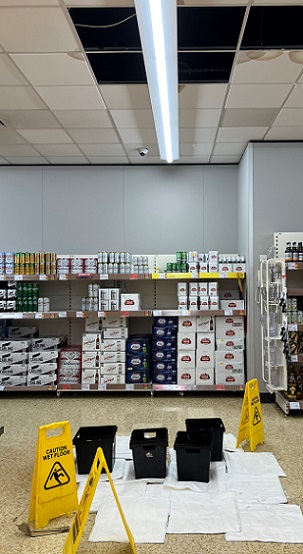 FloodSax are used by major supermarkets to deal with flooding emergencies while ensuring health and safety
FloodSax are used by major supermarkets to deal with flooding emergencies while ensuring health and safety
Rocketing cost of prefilled sandbags makes buying FloodSax alternative sandbags the first choice when it comes to instant flood protection
Research has proved that buying prefilled traditional sandbags costs far more than FloodSax alternative sandbags.
This is despite the fact that, unlike sandbags, FloodSax are multi-purpose and can be used to stop floods both inside and outside homes and businesses.
They are also more effective than old-style sandbags as flood protection and flood mitigation barriers and are more environmentally friendly too.
A box of 20 FloodSax alternative sandbags costs around £140 yet research has shown just how much sandbags now cost.
Bear in mind that the vast majority of sandbags weigh just 15kg and are smaller than FloodSax which weigh around 20kg. FloodSax have a far more uniform shape than sandbags so are easier to stack than plastic-coated or hessian-coated sandbags to make robust flood protection barriers strong enough to stop a torrent of floodwater.
If you’re wondering how much prefilled sandbags now cost here are some of the April 2023 sandbag prices (including delivery) companies are charging for prefilled sandbags on the internet.
One of the UK’s biggest suppliers charges £165.50 for 20 while another has them at £150.41 for 20 and a third will sell you just 10 for £96.
One well-known company has them for £372 for 70 along with the warning that “hessian sandbags should be used within four weeks of purchase due to biodegrading as soon as they get wet.”
Another admits: “Hessian sandbags eventually rot away. Due to their relatively short lifespan, our hessian sandbags are filled to order and we recommend using them within 4 to 6 weeks.”
FloodSax are vacuum-packed so have a shelf life of at least 5 years and will remain effective for around 3 months and probably a lot longer once they have come into contact with floodwater.
Sandbags come with other problems and limitations. Where would you store sandbags until you need them as they take up a lot of space and need to be kept somewhere dry.
Secondly, you’ll most probably struggle to get them at short notice. Delivery times from many suppliers will take at least three days with one quoting seven to 10 days and you’ll need a space big enough for a lorry to park to unload them.
Not so with FloodSax where the opposite is true in every case.
FloodSax come vacuum-packed in packs of 5 making them incredibly space-saving to store - and 4 packs fit into a box of 20 which one person can easily carry. In comparison, you’d struggle to carry a couple of sandbags, let alone 20.
This ease of alternative sandbag storage and handling means you can (and ideally should) buy FloodSax in advance so you are protected against flooding any time of the day or night, including weekends and bank holidays.
Unlike sandbags, FloodSax are the ultimate multi-purpose anti-flooding product.
In their dry state they are a very flat, absorbent pad with a large surface area so can soak up leaks, spills and floods indoors, even in the hardest-to-reach places such as beneath boilers, below radiators and underneath pipes.
Floodsax prevent leaking water getting onto floors, furniture and electrics, wrecking them and causing thousands of pounds damage.
But immerse FloodSax fully in water and they will absorb up to 20 litres and retain it so the FloodSax is transformed into an instant sandless sandbag.
FloodSax are largely biodegradable so can be disposed of in landfill once they have been used.
Bear in mind that local councils have no responsibility to provide sandbags if a flood is imminent.
The Environment Agency makes this very clear by warning: “Don’t assume the authorities will provide you with sandbags in a flood emergency. It is the responsibility of property owners to take appropriate action to protect their property from flooding.”
UK flood expert Mary Dhonau, director of MDA Flood Resilience Consultants and leader of the Know Your Risk Flood Campaign, says: “Sandbags do more harm than good and it frustrates and upsets me to see them continually being used as a go-to solution when they simply don’t work.
“Whenever a flood is imminent, everyone at risk calls for the inefficient and environmentally unfriendly sandbag which I consider to be no more than a ‘comfort blanket’ when a flood emergency happens.
“In a test at an accredited British Standards Institute testing tank, four sandbags placed in front of a household door failed after just 59 seconds of the water being turned on while 10 sandbags held water back for just over two minutes.
“The sand that escaped from the bag badly blocked the sump pump used to drain water out of the testing tank. This also happens in real flood conditions and sand often collects in drains afterwards, rendering them inefficient come the next heavy rainfall.”
FloodSax, devised by Yorkshire-based Environmental Defence Systems Ltd, passed all tests under similar conditions and, as they don’t contain any sand, there’s no danger of them clogging up drains.
Local councils don’t like sandbags either.
Rossendale Council in Lancashire says: “Sandbags are relatively ineffective when compared to purpose-designed flood protection products. As a result, we strongly encourage people to use purpose-made flood protection products.
“Sandbags have disadvantages. During an emergency, sufficient quantities may be difficult to obtain, they are time-consuming to lay properly and can be difficult to handle, particularly for the elderly or infirm. The sacking material is biodegradable and will disintegrate if left in place for long periods of time.”
FloodSax have proved themselves in action time and time again and around 3 million have now been sold worldwide.
A box of 20 FloodSax are available from £140 including delivery from FloodSax Express (https://floodsaxexpress.com/) which always aims to provide a next-day delivery service.